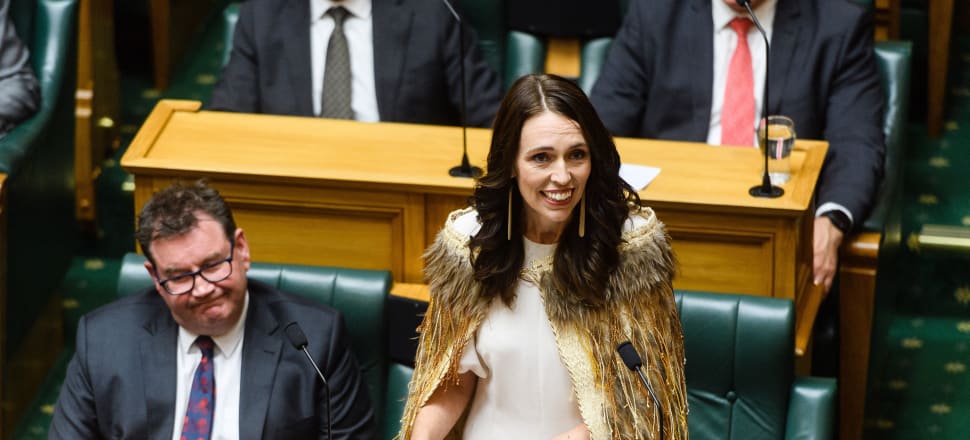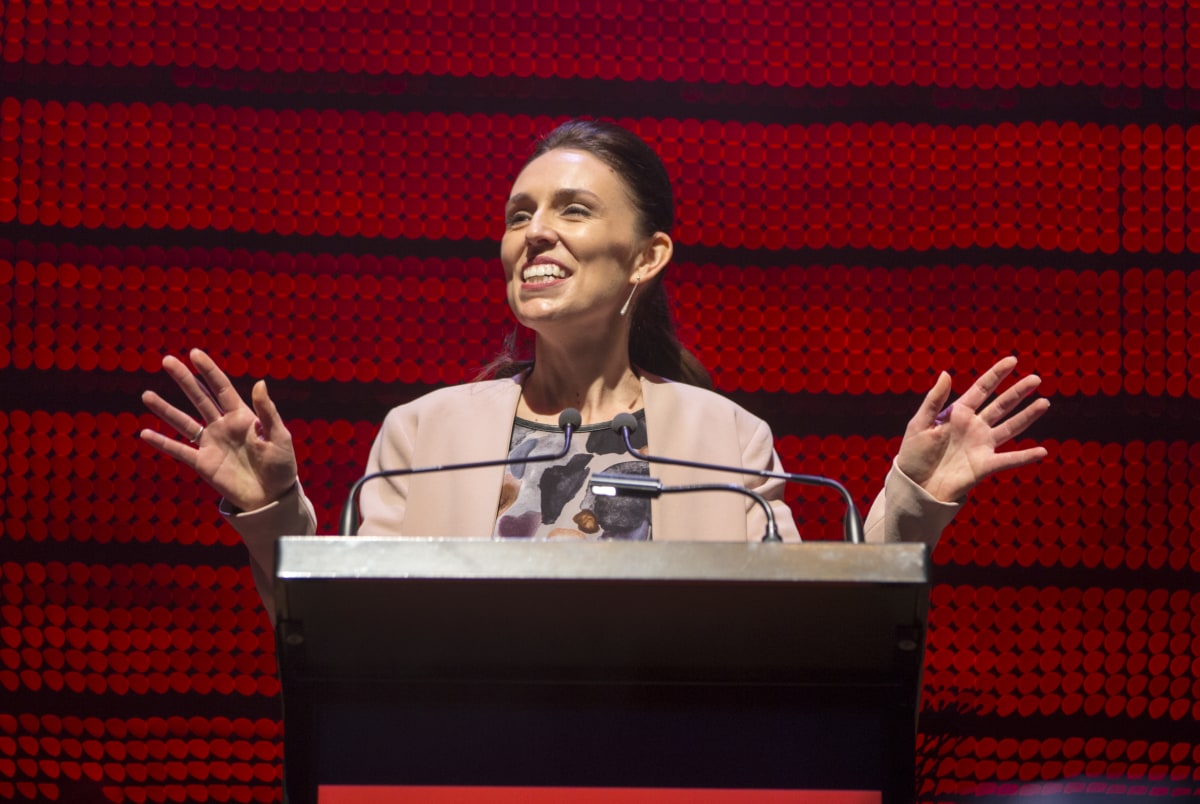
A self-described “hugger and crier”, Jacinda Ardern said she once went to see Trevor Mallard to get advice on how to “harden up”. The former Prime Minister has left Parliament for the final time reminding everyone that you don’t have to change who you are to be a politician.
“While I convinced myself that you cannot be a worrier, and be in this place, you can. You can be that person and be here.”
The message Jacinda Ardern wanted to leave as she recounted the highs, the lows, the laughs, and the tears, of her five years leading the country, was that you can be whoever you want to be and still make it in politics.
“I am sensitive. Or as Maggie Barry once called me, “a precious petal”.
READ MORE:
* Ardern was a role model but must have hoped for more
* Hipkins on disagreeing with Ardern and carving his own path
Ardern rattled off countless descriptions and reasons for why both she and her critics had concluded she couldn’t be an MP, let alone the Labour leader or Prime Minister.
“I remember in my early days being thrown by the odd nasty comment, or negative commentary. I even went to Trevor Mallard for advice on how to harden up.
“I thought that I would need to change dramatically to survive,” she told the packed galleries at Parliament on Wednesday night for her valedictory.
But as it turned out Ardern reached a point where she accepted she wasn’t going to change, and that there was nothing wrong with being a hugger.
“I remember going into the aftermath of Whakaari and seeing a comment about how I was just going in to hug people again. It stuck with me.
“So much so that when a first responder who was emotionally telling me about their experience, I had an internal argument with myself as to whether I should comfort them when I knew I would likely be criticised,” Ardern recalled.
“I would rather be criticised for being a hugger than being heartless, and so hug I did. A lot.”
Ardern, almost reassuring herself, said you can be "that person and be here”.
“A valedictory is not a place to summarise a pandemic. No one has the time for that kind of group therapy."
During her more than 30 minutes at the podium, delivering her memories and hopes for the future one last time, the MP for Mt Albert spent little time talking about her early days as a Labour MP.
Instead, the timeline started when former MP for Mt Albert, David Shearer, decided Sudan was more appealing than being in Opposition and upped sticks leaving the seat vacant for Ardern to take a run at.

In very quick succession she became leader after Andrew Little called time and asked her to step up and just a couple of months later, she was Prime Minister.
Shortly before she took over as Labour leader, she and partner Clarke Gayford found out they had been unsuccessful in trying for a baby through IVF.
Ardern, realising she had a campaign to be Prime Minister ahead of her, threw herself into work and wrote off much chance of ever becoming a mother.
Too much stress was part of the reason she was told she hadn’t been able to conceive, and she didn’t see that changing.
But somewhere in amongst all that she fell pregnant and became only the second woman in history to give birth while in office.
Ardern wanted it on record that she had been lucky to have a village to help raise her daughter, Neve, and that she left knowing “I was the best mother I could be”.
“You can be that person and be here.”
Her special mentions for Gayford, Neve, her parents, her chief of staff, Raj Nahna, and her deputy, Grant Robertson were words of thanks, and colourful stories that brought a lot of laughs.
“I didn’t change, I leave this place as sensitive as I was.”
Ardern chuckled as she explained the practice her mother took up during Covid where she’d send her daughter a personal thought each day.
Some she would share with her team, but there were others even she thought were a tad grandiose, even for a dedicated mother.
“Remember, even Jesus had people who didn’t like him,” she read out with much amusement.
In the case of Nahna she thanked him for his help getting the European free trade agreement across the line after one of the European Union leaders revealed his obsession with her chief of staff’s head of hair.
Not one to enjoy being in the spotlight, Nahna let a small smile slip as Ardern recounted the leader reaching up and playfully messing up Raj’s hair “as if he was a hairdresser in a Pantene commercial”.
While much of Ardern’s time was dominated by crisis and tragedy like the March 15 terror attacks, the Whakaari eruption, and the Covid pandemic, she wanted the history books to also remember the Dawn Raid apology, abortion law reform, free period products in schools, and the banning of conversion therapy, to name a few.
After moving her family to Wellington for much of the pandemic she shared a story of returning to their Auckland home some months later and Neve asking where the toilet was.
But the pandemic story didn’t continue for long.
“A valedictory is not a place to summarise a pandemic. No one has the time for that kind of group therapy,” she said.
Despite living through and leading a country through such extraordinary times, Ardern said she didn’t consider herself to have had “anything in my life that made me especially extraordinary”.
And while she can’t determine how her time in Parliament will be defined, she said she hoped she had broken the mould of what sort of a person you had to be to be there.
“I didn’t change, I leave this place as sensitive as I was.”
Whether a mother, a mormon, a nerd, a crier, or a hugger – Ardern says you can be any of those things, or not, and not only be an MP, but be Prime Minister.
Struggling one last time to say, “no reira tēnā kotou, tēnā kotou, tēnā koutou katoa” – just like that, Ardern’s time was done.
As colleagues, friends, and family stood and sung waiata for Ardern, she hugged each and every single MP on the chamber floor.
Once a hugger, always a hugger.







